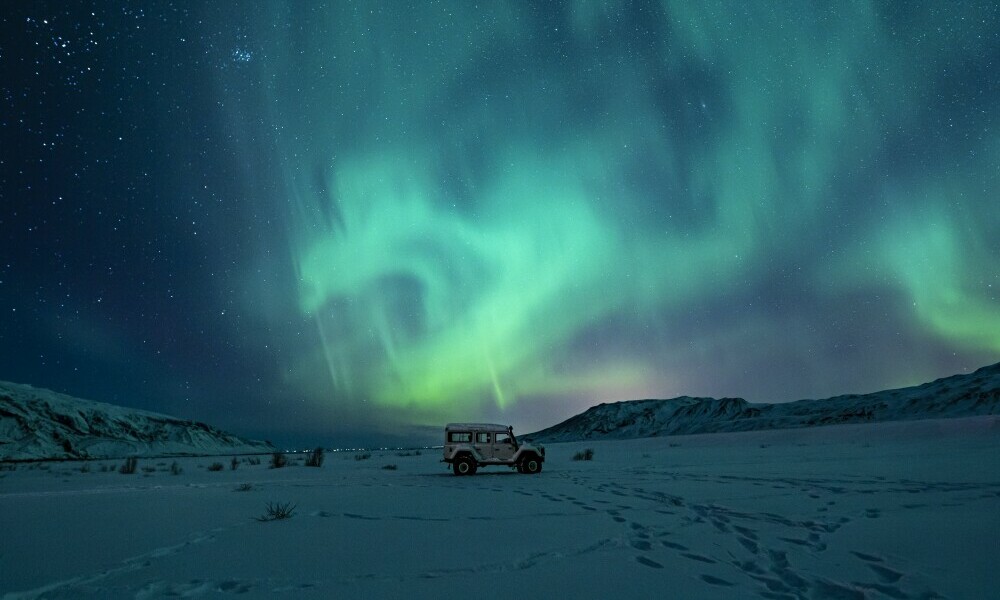Jonatan Pie. (2020) the Northern Lights [Photograph]. Unsplash.
Few natural phenomena, like the Northern Lights or the Aurora Borealis, captivate the imagination. This stunning celestial display, characterized by shimmering green, purple, and blue waves, has drawn travelers to polar regions for centuries. If witnessing this spectacle is on your bucket list, timing is everything. While the auroras can occasionally appear throughout the year, certain months offer optimal conditions for viewing. Understanding the best months to see the Northern Lights will significantly enhance your chances of experiencing this magical event.
The Science Behind the Best Months for Northern Lights Viewing
The best months to view the Northern Lights fall between September and April. These months provide the darkest skies, essential for spotting the auroras. The autumn and spring equinoxes (late September and late March) are particularly favorable due to increased geomagnetic activity. During these periods, the Earth’s tilt allows solar wind particles to interact more effectively with the planet’s magnetic field, heightening auroral displays.
The winter months—December, January, and February—are also prime for viewing the Northern Lights. The extended darkness and crisp, clear skies create ideal conditions. However, extreme cold and unpredictable weather patterns can pose challenges, so dressing appropriately and checking forecasts is crucial.
While increased daylight in polar regions from May through August makes aurora sightings difficult, it is still possible to see them during brief windows of darkness, particularly in places like Alaska and northern Canada.
The Best Locations for Seeing the Northern Lights
Jonatan Pie. (2017) the Northern Lights [Photograph]. Unsplash.
Knowing when to go is just one part of the equation. Choosing the right location is equally vital. The Auroral Oval, a zone surrounding the Earth’s geomagnetic poles, offers the best opportunities. The following destinations are among the top locations to witness the Northern Lights in their prime months:
- Tromsø, Norway—Ideal from September to March, this Arctic city offers long nights and excellent chances to see auroras.
- Lapland, Finland – Offering incredible displays from late August to April, Finland’s vast wilderness minimizes light pollution.
- Reykjavik, Iceland – One of the most accessible locations for aurora hunters, with peak sightings from October to March.
- Fairbanks, Alaska, USA – A hotspot from September to April, boasting clear skies and aurora forecasting tools.
- Yellowknife, Canada – One of the world’s most consistent Northern Lights destinations, best visited between November and March.
Selecting locations with minimal artificial light and frequent clear skies will significantly improve your chances of experiencing a breathtaking auroral display.
Monitoring Auroral Activity for the Best Viewing Opportunities
Matt Houghton. (2019) the Northern Lights [Photograph]. Unsplash.
Staying informed about auroral activity is essential to maximize your chances of seeing the Northern Lights. The KP index, which measures geomagnetic disturbances on a scale from 0 to 9, is a key indicator. A KP index of 3 or higher increases the likelihood of auroras appearing. Websites like the Space Weather Prediction Center (SWPC) and mobile apps dedicated to aurora forecasting provide real-time data and alerts.
Weather conditions also play a crucial role. Heavy cloud cover can obstruct visibility even during the best months for aurora borealis. Regularly checking local forecasts and satellite imagery can help you plan viewing sessions accordingly.
Enhancing Your Northern Lights Experience
Maximizing your experience requires more than showing up at the right time and place. Here are some essential tips:
- Find the darkest possible location – City lights can diminish the visibility of auroras. Opt for rural or wilderness areas.
- Be patient and stay flexible – Sometimes, auroras appear unexpectedly. Give yourself multiple nights to increase your chances.
- Use the correct camera settings—A DSLR or mirrorless camera, a wide-angle lens, and a tripod are essential for effectively capturing the Northern Lights. For the best results, use a long exposure (5-15 seconds) and a high ISO setting (800-3200).
- Stay warm and comfortable – Many prime months for seeing the Northern Lights coincide with freezing temperatures. Layered clothing, insulated boots, and hand warmers will ensure a comfortable experience.
- Join an aurora tour. Expert-led guided excursions can take you to prime viewing locations and provide insights into the science behind the auroras.
Final Thoughts: When to Plan Your Aurora Adventure
Jonatan Pie. (2019) the Northern Lights [Photograph]. Unsplash.
The best months to see the Northern Lights are between September and April, with peak activity occurring during the equinoxes. Choosing an optimal destination, staying updated on Aurora forecasts, and preparing for cold weather will enhance your chances of a successful viewing experience. While patience and luck play a role, proper planning ensures you stand the best chance of witnessing one of nature’s most breathtaking spectacles.
So, if you’re wondering what months you can see the Northern Lights, the answer is clear: focus on the darker, colder seasons, and your dream of experiencing the aurora borealis may soon become reality!
Disclaimer: The Northern Lights is a natural phenomenon, and sightings cannot be guaranteed.
For additional blogs, please visit: https://northernlightsshuttertech.com/
(This post contains affiliate links. If you make a purchase, I may receive a small commission at no cost to you )





